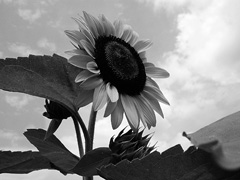The Cheese & The Worms
(“Chizu to ujimushi”) JAPAN / 2005 / Japanese / Color / Video / 98 min
JAPAN / 2005 / Japanese / Color / Video / 98 min
Director, Editing: Kato Haruyo
Photography: Kato Haruyo, Kato Naomi, Kurita Masanori, Nakajima Norio
Music: Suga Dairo
Sound Editors: Kikuchi Nobuyuki, Hayakawa Kazuma, Kuze Keiko
Source: Kato Haruyo
The director lives in a small rural town with her dying mother and old grandmother. The serene eye of the camera depicts her mother’s fight with illness side by side with casual daily exchange with her brother’s family next door. Through interspersed images of her mother, the warmth of the family and their love for her is slowly and gently nurtured. Face to face with the all too real death of her mother, the director takes a hard look at life and death, preserving each fragile moment on film. Slowly but steadily, the feel of life’s delicacy emerges. Before long an angel descends to gaze on us all.
[Director’s Statement] One day I was suddenly told that my mother had one or two years to live.
In the third year of her illness, I bought a small video camera innocently believing that she would recover. I dreamed of recording her TV or movie-like “miracle” recovery, but the reality of everyday life was nothing more than ordinary routine. All that my small camera recorded were the same things contained in ordinary home videos of ordinary families. On the contrary, as my mother’s condition worsened and her suffering and sorrow increased, all I could do was watch over her closely. I didn’t have the courage to level my camera at her. When pain and sorrow really started to take hold on my mother, and when she started to die, I was not able to record even a single shot.
It was only after her death that I first found the determination to begin filming. I realized that people left behind by death have to keep crawling forward even as they cry like babies. I also could not accept my mother’s death unless I could find something comforting and meaningful in this pain and loss.
All those sad things I couldn’t film might have been, in a way, things I didn’t need to film, because even now the pain allows me to remember them clearly. More than that, the memories that I hold dear now probably would have slipped away if I hadn’t recorded them on video—those monotonous, repetitive, but painful hours with my mother that video had transformed into sweet, gentle, ordinary happiness.
 Kato Haruyo
Kato Haruyo
Born in 1966, Kato Haruyo graduated from the Department of Art Science in the Faculty of Art and Design at Tama Art University, and worked as the assistant of a still photographer. After two years with the Black Tent Theater company, her mother’s illness brought her back to her hometown. She now lives in Gunma Prefecture. |
